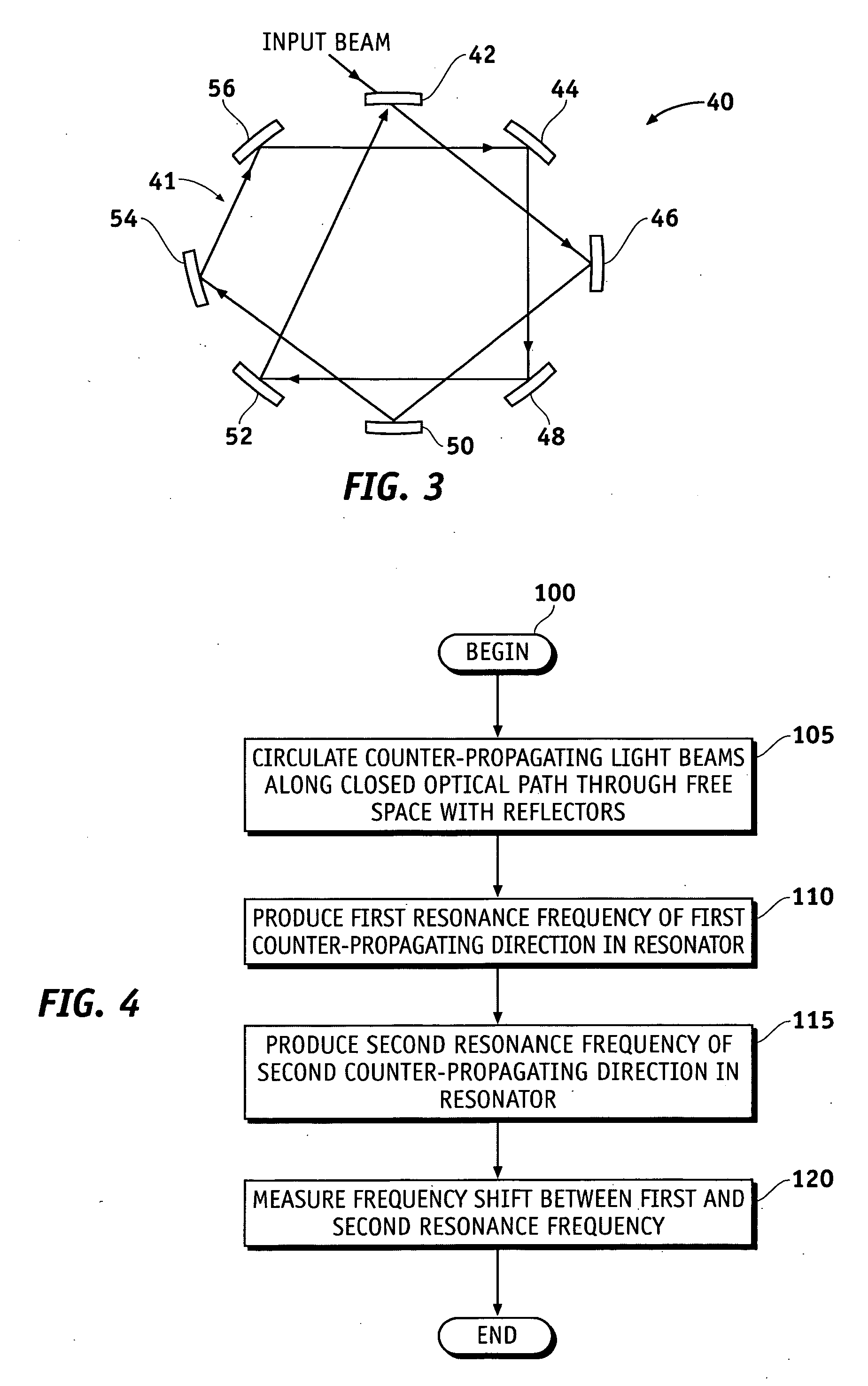Optical gyro with free space resonator and method for sensing inertial rotation rate
a free space resonator and optical gyro technology, applied in the field of optical gyro systems, can solve the problems of reducing the signal-to-noise ratio, false indication of rotation or inaccurate measurement of rotation rate, and reducing the accuracy of the measurement of rotational ra
- Summary
- Abstract
- Description
- Claims
- Application Information
AI Technical Summary
Problems solved by technology
Method used
Image
Examples
Embodiment Construction
[0016] The following detailed description of the invention is merely exemplary in nature and is not intended to limit the invention or the application and uses of the invention. Furthermore, there is no intention to be bound by any theory presented in the preceding background of the invention or the following detailed description of the invention.
[0017] Referring now to the drawings, FIG. 1 is an exploded view of an optical gyro 10 in accordance with an exemplary embodiment of the present invention. The optical gyro 10 comprises a first substrate 30, a resonator 14 formed on the first substrate 30 and having a closed optical path 39, a signal processing electronics34 (e.g., a signal processor) formed on the first substrate 30, and a second substrate 32 coupled to the signal processing electronics. The first substrate 30, resonator 14, and signal processing electronics 34 are collectively referred to as a first optical bench 29. The substrates 30, 32 may be silicon, silicon-on-insul...
PUM
 Login to View More
Login to View More Abstract
Description
Claims
Application Information
 Login to View More
Login to View More - R&D
- Intellectual Property
- Life Sciences
- Materials
- Tech Scout
- Unparalleled Data Quality
- Higher Quality Content
- 60% Fewer Hallucinations
Browse by: Latest US Patents, China's latest patents, Technical Efficacy Thesaurus, Application Domain, Technology Topic, Popular Technical Reports.
© 2025 PatSnap. All rights reserved.Legal|Privacy policy|Modern Slavery Act Transparency Statement|Sitemap|About US| Contact US: help@patsnap.com



